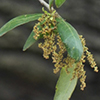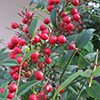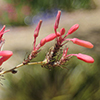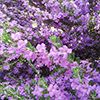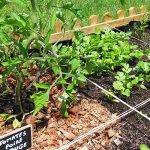Not all yellowing leaves can be attributed to a lack of or need for water. San Antonio might be hot and dry, but there are many plants that like it that way.
Many plants that are advertised as drought tolerant can actually lower your water bill because they can survive the hot Texas summer with little to no extra water from you. But drought tolerant plants only save you money and water if you don’t water them.
While traveling around the city looking at landscapes, I took note of some of the most common over-irrigated drought tolerant plants.
1. Texas live oaks
Texas live oaks are majestic trees that can live hundreds of years and grow in excess of 50 feet tall and just as wide. And their shade is a blessing during our brutal summers. Live oaks are well adapted to the wide fluctuations of our Central Texas climate and they don’t need additional water even during the worst droughts. Several exceptionally large specimens can be seen growing in Phil Hardberger Park — far away from any sources of irrigation.
2. Nandina
Nandina, or “heavenly bamboo,” is a common shrub used in many new landscapes that once established is practically impossible to kill. Nandina grows a dense web of thick roots that allow it to survive long periods of drought without showing any signs of stress. This shrub, originally from East Asia, is so well adapted to the South Texas climate that it has escaped cultivation and is a nuisance in wild areas where it destroys habitat by outcompeting native plants. I’ve noticed a few sprouting up in Mud Creek Park under the live oaks there. The red berries produced by Nandina can be toxic to migratory birds. We strongly discourage the use of Nandina in San Antonio landscapes, but if you do have them they don’t need extra water.
4. Red yucca
Red yucca, or any yucca/agave/cactus, are all plants with very low water requirement; however, I consistently see them under irrigation. Like cenizo, this group of plants will thrive in locations that receive even less rainfall than we do in San Antonio. Adding extra water to them will actually encourage a healthy growth of weeds among the spikes and spines. Any water applied to yuccas is water truly wasted.
3. Cenizo
Cenizo is a beautiful shrub and a true desert plant from far West Texas and the Big Bend area — so actually San Antonio weather is a little too wet for it. Still, every in-ground sprinkler system I see is watering cenizo. Sadly, providing cenizo with constant water can actually hamper one of its most interesting features. A few days after a rain storm, cenizo will be covered in flowers, turning this normally gray-green bush into a purple cloud. To get the most blooms, the plant needs to dry out between rainstorms, otherwise expect a lack luster display.
5. Ligustrum
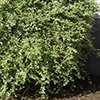
Ligustrum, also called privet, is a shrub planted as an evergreen barrier, especially in older neighborhoods around San Antonio. There are a few species of ligustrum, all have dark green leaves, white flowers and little black berries. Like nandina, this plant has naturalized and escaped cultivation, degrading local ecosystems. Especially dense thickets of ligustrum can be seen chocking out native vegetation along Salado Creek.
Of course not every plant in every landscape will behave the same. Plants that do well in your neighbor’s yard — or even other parts of your yard — might not do so well where you plant them. Many factors, apart from water, affect how a given plant performs.
Remember not all yellowing leaves can be attributed a lack of or need for water. San Antonio might be hot and dry, but there are many plants that like it that way.


